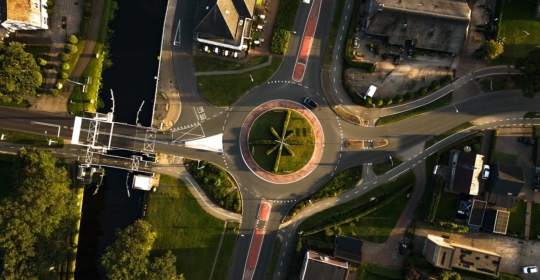
General Mills: Corporate insights from piloting freshwater SBTs
Company:
General Mills
The SBTN freshwater hub coordinated science-based targets for nature pilots with General Mills, Procter & Gamble and Suntory between April 2021-June 2022 throughout various parts of their value chains.
General Mills is a member of SBTN’s Corporate Engagement Program.
What has your freshwater target-setting journey been like to date?
Water is life. All plants and animals require water to live – including the plants and animals we depend on to provide our ingredients. As a food company, General Mills depends on clean, abundant freshwater to grow our ingredients (85% of our impact). Water risk is how climate change impacts General Mills, and it impacts the company financially. In 2016, General Mills set its first water stewardship commitment, and in 2021 we joined the freshwater science-based targets pilot to continue gaining insights into how to advance our commitment to regenerate water resources in the watersheds we depend on.

What motivated General Mills to undertake SBTN’s pilot on setting freshwater science-based targets?
We have always used a context-based approach to target-setting, but where we have been challenged is on understanding at what scale to operate and how to track advancement. 99% of our water impact is beyond our owned manufacturing operations, with 85% of the total in agricultural sourcing. The freshwater science-based targets pilot helped us dig into the appropriate scale of water impact we need to address in agricultural sourcing and get more precise on our focus.
We were also interested in understanding the potential of regenerative agriculture as a viable solution for water impact in stressed watersheds. We were interested in the potential for the freshwater science-based target pilot to reveal opportunities for positive impact vs. managing business risk.
Finally, we were motivated to influence the industry toward greater focus on water impact in the upstream supply chain. Since General Mills’ water impact is primarily in our agriculture supply chain, that is where we have primarily focused our stewardship activities. Yet, much of the sustainability/ESG world continues to focus on owned operations and manufacturing, where only 1% of General Mills’ water impact lies. In participating, we hoped to inspire other companies to understand and act upon water impact that may be outside of their own four walls.
What insights emerged from the pilot?
We are affirmed in our focus on agriculture and ingredients as the primary area where we can drive positive impact in water. We are also affirmed in using regenerative agriculture as an important lever to advance positive outcomes in some of our biggest supply sheds. We will continue to advance and measure water impact in our regenerative agriculture projects, including in the San Joaquin Valley, California, one of the watersheds we tested during the pilot.
Participating in the pilot also revealed many challenges, for example, with accessing stakeholders in a timely fashion and calculating water impact in a data-poor environment, such as our India supply shed. However, we learned about exciting new tools, such as satellite mapping of groundwater, that supported us in the illustrative target setting process.
We just launched our 3-year watershed prioritization refresh, and we are using SBTN’s Assess and Prioritize steps in collaboration with the World Wildlife Fund (WWF) and believe the evaluation tools are strong.

What benefits did setting freshwater targets through the pilot bring to the company?
Setting illustrative targets helped us better understand the scale of our impact in our California and India sourcing supply sheds. It also started to give us a sense of levers we can use to advance water stewardship at the appropriate scale. For example, in California, preliminary modeling for regenerative agriculture impact indicated that we may be able to hit the illustrative target through regenerative agriculture as a key intervention.
Target setting also underscored how vital it is to act within coalitions, where all users contribute progress toward healthy watersheds. General Mills is a big company – $19 billion in revenue in Fiscal Year 2022 – but even so, is a tiny user at the watershed scale. Since water in our upstream supply chain is not something we have direct control over, we must explore ways to motivate and champion positive impact.
What advice would you give to companies who are considering preparing to set science-based targets for nature?
Try the methodology and see what it reveals for your company. The process is a big challenge but going through it will help you uncover so many new insights and questions that can ultimately help you engage in the most impactful possible way. We particularly encourage others to look at upstream value chains where they may have dependencies and impact beyond owned operations. Much of water stewardship work to date has emphasized efficiency at manufacturing sites, and that is certainly a vital part of the story. However, we all have the responsibility to consider our full water footprint as companies, and the SBT methodology can generate insights into opportunities throughout the value chain.
~
Ahead of the first release of science-based targets for nature v1 in early 2023, Science Based Targets Network is seeking public comment – until October 15 – on its technical guidance for companies to set science-based targets for nature, with a focus on helping companies assess and prioritize their environmental impacts to then set targets, beginning with freshwater. More information.



